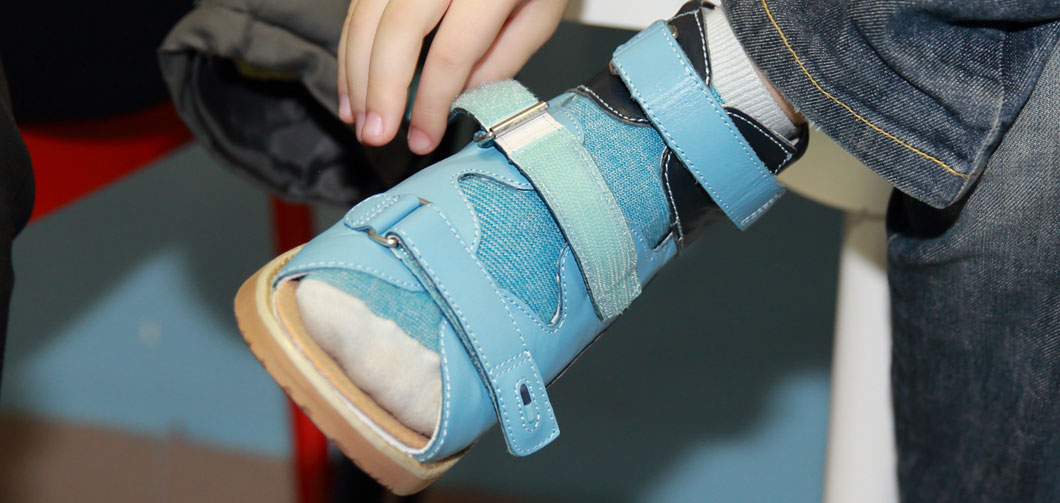Many different foot diseases can be prevented or stopped with special orthopedic shoes.
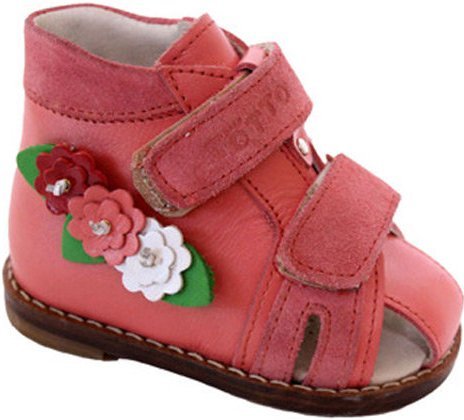
- How to choose shoes for the first steps? Advice for parents
- The choice of the first shoes: basic criteria
- Do babies need special shoes?
- Orthopedic shoes - do all children need them?
- Measure and check: when size matters
- Orthopedic therapy shoes
- When are orthopedic therapeutic shoes required?
- Prophylactic orthopedic footwear
- Who needs prophylactic orthopedic shoes?
- Assess the quality of the products
- Rules for choosing orthopedic shoes for children
- Orthopedic shoes for children in season
- Orthopedic and preventive shoes - what's the difference?
- Prophylactic shoes – the best option for a healthy child
- Is preventive footwear essential for a healthy child?
- Summary
- How to choose the size of children's orthopedic shoes?
- Important subtleties
How to choose shoes for the first steps? Advice for parents
When a child is just beginning to walk, their feet are not yet formed. During this time, it is important to choose quality footwear for your child that not only fits well, but also does not hinder foot development. The right footwear reduces the risk of flat feet and muscle weakness. Your child will feel comfortable in the shoes: they can move freely and stand on their feet with confidence.
Don't rush to buy shoes while your child is learning to balance and move their feet. Crawling and walking barefoot or in socks will help your child's feet form properly. Flat floors can cause foot deformities - it's better to walk on uneven surfaces like sand or grass.
Later, when the child begins to move on the support, shoes can be purchased. It may take some time for the child to get used to wearing the shoes, so it is not necessary to put the slippers on at home every time.

The choice of the first shoes: basic criteria
Before choosing shoes for your child, you need to determine the size of his feet. It is best if you choose the shoes together with your child so that you can try on your favorite pair. If that is not possible, measure at home: lay your child on a piece of paper and trace the outline of the foot. The distance from the front heel to the tip of the longest toe is the foot length.
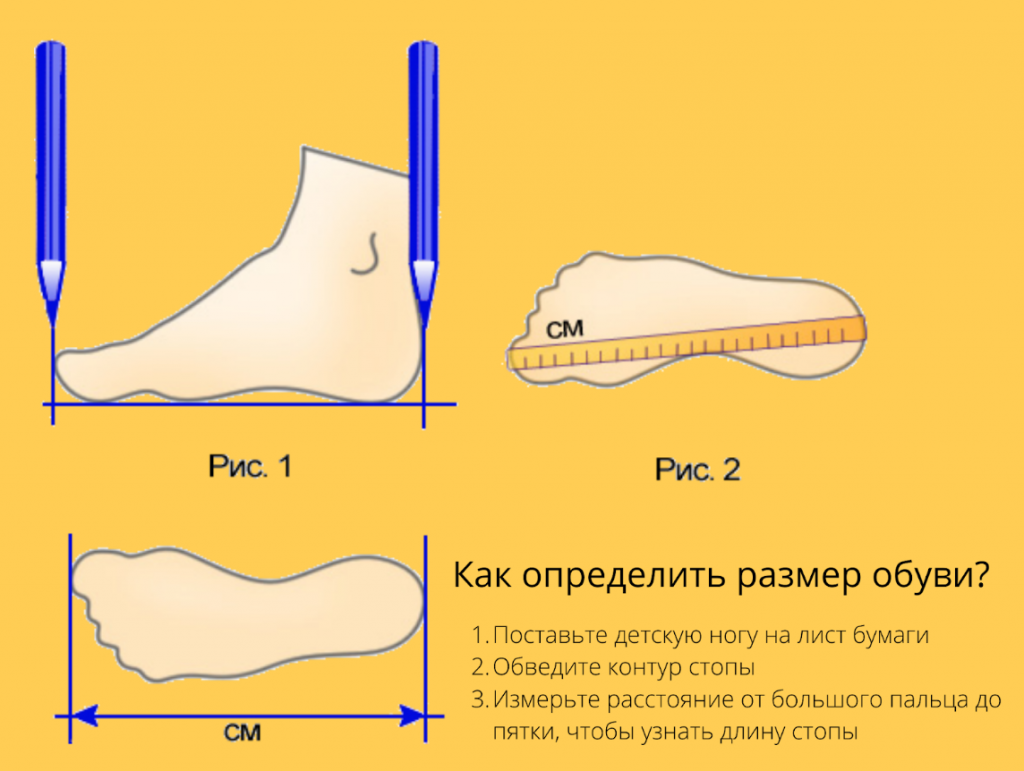
Check your worth using a shoe size chart. Another option is to take the cast to the store and put in an insole.
Children's feet grow fast, so you should make them a little bigger. The shoe may differ by 0.5-1 cm from the actual foot size. Don't bring larger shoes - they will cling to your baby's feet and make them uncomfortable.
Do babies need special shoes?
Very often parents are in doubt whether to buy shoes online or in a store. As a rule, online websites for baby shoes offer all the information you need: from the size of the shoe to all the necessary details.
However, if you do not need any special medical adjustments and are looking for regular or even orthopedic prophylactic comfort shoes, please visit our website! If you like a certain model on our website, but you cannot find the information you need (e.g. children's shoes with custom insoles), you can write your questions in the comments when ordering. During the processing of your order, the Seller Advisor to clarify any points of interest.
And when you're in Moscow, things get even easier: in most cases, you can order several pairs of shoes to try on. You have the option of courier delivery!
So you can choose what is most comfortable for your child.


Of course, buying shoes directly from the manufacturer is very convenient and inexpensive: you do not overpay for advertising, sellers and much more. We, on the other hand, try to make your purchase more cost-effective and pleasant.
On our website you will find both shoes directly from the manufacturer and the address of the offline store 'Djoy Orthopedic'. This is an opportunity to save money. Don't miss them.
At Djoy Ortopedic you can buy preventive orthopedic shoes for children. We are a private company dedicated to helping parents support the healthy growth and development of their children.
g. Moscow, Sushchevsky Val Str. 5, Building 9, Pavilion L-16.
All rights reserved © Djoy Orthopedic, 2023
Orthopedic shoes - do all children need them?
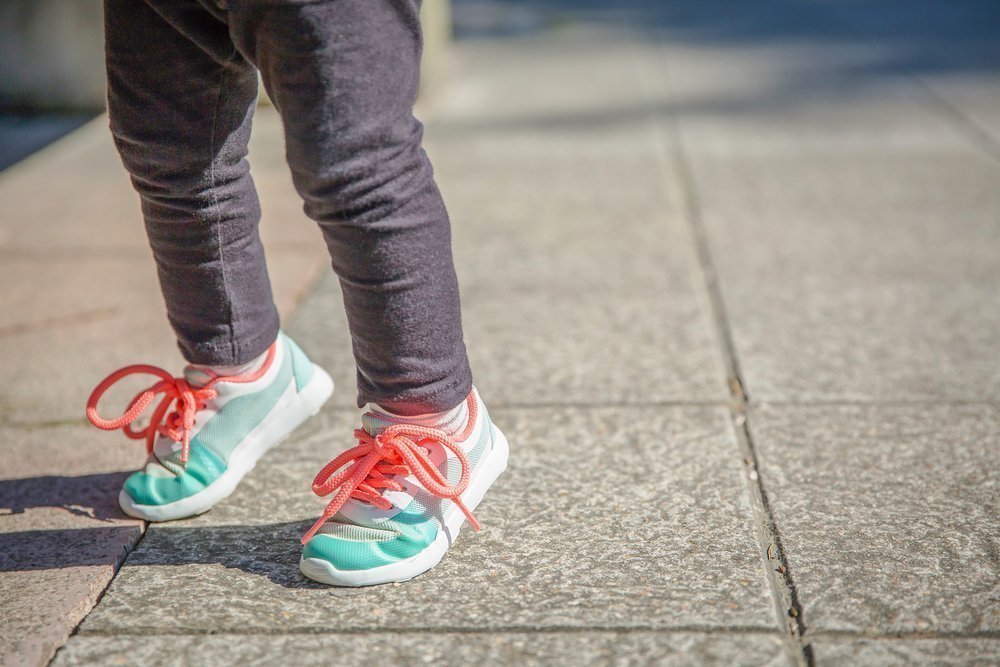
GOST 23251-83 refers to orthopedic shoes designed to take into account pathological changes in the foot, thigh or lower leg. From this definition, it can be concluded that this type of shoes is not suitable for every child and should only be bought on the recommendation of a pediatric orthopedist.
However, it should be noted that orthopedic salons and pharmacies often offer for sale one type of orthopedic shoes - prophylactic shoes. Their main task is to make walking as comfortable as possible and to prevent the development of foot deformities. Wearing such shoes will benefit your child's health, provided that the first purchase is made from the age of three.
Measure and check: when size matters
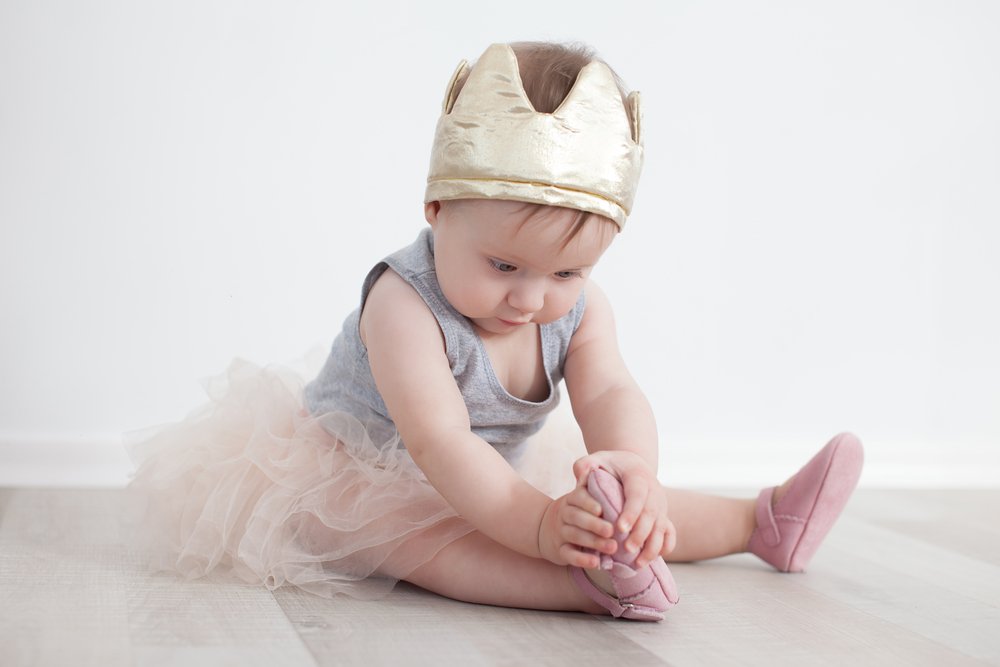
One of the most important rules when choosing children's shoes is to adapt them to the size of the child's feet, both in terms of length and width. Shoes or sandals should not be too tight or otherwise 'hang' on the foot, otherwise there is a risk that the foot will become deformed.
The 'right' length for a child's first shoe is the size of the child's foot plus 0.5 cm. On hot days, this addition prevents the foot from being pinched in case of slight swelling, and on cold days it offers space for the warm air in the shoe.
Children's shoes that are too big can have a negative effect on the child's gait or lead to serious orthopedic problems.
Visiting the store with the child is a guarantee of the best 'fit' when buying children's shoes. It is important that the child not only tries on the shoe, but also takes a few steps in it. This is how you can determine if the shoe is the right size and comfortable to wear.
If it is not possible to take the child to a shop, the parents must take measurements at home beforehand. Both feet should be measured, as the length of children's feet can vary slightly (in this case, the higher value is taken as the base value).
Since children's shoes should not be worn barefoot, it is advisable to wear socks before measuring. Procedure for determining a child's foot size:
- Using a tape measure or ruler, measure your child's foot from the heel to the tip of the big toe.
- Measure: 10.5cm is size 17, 11.5cm is size 18, 11.5cm is size 19 and so on. (each additional size is plus 0.5 cm).
Orthopedic therapy shoes
Orthopedic therapeutic shoes (GOST 54407-2011) are shoes designed to compensate for pathological changes in the foot, shin or hip.
Orthopedic therapeutic shoes are essential to correct foot deformities and prevent their development. These shoes can only be prescribed by an orthopedic surgeon.
Small medical orthopedic shoes Prescribed by an orthopedic surgeon to correct foot deformities. The distinctive features of this footwear are a high heel, high back support, high stiff ankle and low heel.
The strong support ensures that the foot is always in the right position and develops a normal shape and posture over time. This type of shoes must be worn at all times.
Therapeutic orthopedic shoes are prescribed by an orthopedist for severe or irreversible foot deformities and after amputations. These shoes are custom made to your measurements.
When are orthopedic therapeutic shoes required?
Foot deformities in children can be congenital or acquired. The first are diagnosed by doctors shortly after birth and the mother finds out at delivery. In most cases, these are acquired deformities that appear as the child grows and develops.
By the age of 7, when the bones, ligaments, and muscles of the foot are still forming, the child may be diagnosed with clubfoot.
- clubfoot (X-shaped feet): The foot is tilted inward and the heel is turned outward. This is one of the most common diagnoses in children under 6 years old.
- Varus planting (O-shaped feet): The foot is tipped outward.
Read more:If the child was born with a foot anomaly or the pathology was later diagnosed by a doctor, then the child needs therapeutic orthopedic footwear.
Prophylactic orthopedic footwear
Prophylactic orthopedic shoes are shoes designed to prevent pathological foot deformities. Basically, prophylactic orthopedic footwear is anatomically correct footwear for children and is recommended for all children from the first steps up to the age of 7 years.
Who needs prophylactic orthopedic shoes?
Without exception, all children are born with flat feet, that is, physiological flat feet are considered normal.
The part of the foot where the arch builds up fills up with fat over time. The fat pad persists until about the age of 3 years, after which the muscles and ligaments begin to actively develop, gradually increasing the height of the arch of the foot.
Around the age of 6 years, the longitudinal arch is formed, and at this age a specialist can tell with certainty whether a child has flat feet or not.
The ossification of the cartilaginous structures of the foot takes place at the age of 11-12 years. Up to this age, orthopaedists regard every foot position as physiological and correctable.
Foot development begins with your child's first steps. During the period of active growth, preventive footwear will help protect your child from abnormal foot development, flat feet, spinal curvature and even problems with internal organs (especially in girls).
Orthopedic therapy shoes are always prescribed for children with diabetes and cerebral palsy. In diabetes and cerebral palsy, orthopedic therapeutic shoes are always prescribed, in the first case because of the vulnerability of blood vessels, and in the second - because of the weakness and instability of the joints.
When choosing shoes for your child, you should listen to your doctor's advice. Even if you buy your child's shoes from an expensive store, the most important thing to consider is the comfort and safety of your child's first shoes, sandals or boots. Only at a young age can foot pathologies be corrected or eliminated.
Assess the quality of the products
Don't think that only foreign-made shoes will do. We offer for everyone to see the liver of brands that have established the production of soft anatomical and orthopedic children's shoes:
- TM antelope. A well-known Russian brand. Produces affordable, high quality, basic orthopedic products. There are no limits to the variety of shapes and sizes. Our line starts with 19 sizes. Manufactured according to all the rules of production of this type of product. Suitable for children aged 3 years and older.
- TM Kotofey. Manufacturer – Egoryevsk Footwear Factory. It is considered one of the largest companies in Russia. It is at the forefront of companies that sew shoes themselves in their own factories and not, like many small tailors, order services from China. The hallmark of these products is their excellent quality and affordable price. The variety of models and colors is impressive. They are known for their comfortable insoles and modern design solutions. It keeps its original appearance for a long time. The sizes start from 17. Shoes and slippers are mainly sewn. The product is subjected to numerous tests for quality and functionality. Refers to the category of conditionally orthopedic shoes. Many models are equipped with an insole.
- Rabbit (orthopedic type) and Cansucan bebe (anatomical type). It combines high quality with an affordable price. Features include lightness, comfort, attractive design and robustness. The Russian brand Cansucan bebe is made in our country by the Turkish company 'Tashi-Orto', which produces products for the smallest users in sizes 16-17.
- ECCO. There are brand stores in all major cities. Nowadays it is possible to buy Danish shoes cheaper than Turkish shoes. Especially when the stores offer significant discounts. The brand's shoes are very popular for their quality, durability, portability and variety of models.
- Minims and Orthopedics. A Turkish company has started the production of 'real' orthopedic therapy shoes. The product is very popular despite its high average price. It is characterized by its particular internal shape, comfort, high rigidity and prophylactic back support. The sole itself is rigid, but the insole is flexible. For children, this is the right choice. You feel comfortable while jumping and running. The weight is high and tailored to the average physical abilities of the wearer. The leather is durable, but quickly loses its appearance, especially with active wear.
- Toto. Users praise the quality and practicality of the shoes. Manufactured according to all orthopedic principles. High, firm heel. Slightly increased transverse rigidity, which allows qualitative fixation of the foot. The sole has considerable stiffness but roll-off is present. The 6 mm high heel protects the foot from twisting and rolling. It is attached with two straps and Velcro. Available with lace closure. Suitable for slim and chubby legs. Multiple colors to make an impression. Only genuine leather inside and out. Many models are equipped with an anatomical footbed.
Rules for choosing orthopedic shoes for children
The first rule when choosing children's orthopedic shoes is to try them on. This is the only way to determine the depth and size. Children's shoes should be loose and true to size. Do not choose models that are one size larger. The biggest mistake is to buy shoes that are too big, as this negatively affects the gait and foot formation.
Immediately after trying them on, remove the socks from the child's foot. If red spots remain on the skin, such shoes are not suitable. This means they will pinch and pinch the foot. You should also pay attention to the materials used. Children's shoes should be made of natural material so that the foot can breathe.
The interior of children's orthopedic shoes plays an important role. Look for supine padding as it affects arch formation.This is important because it interferes with the child's arch formation. Seams and stitching should be done very carefully, rivets and buckles should not be allowed as they can cause wounds.
Orthopedic shoes for children in season
Children's orthopedic shoes, like traditional shoes, are divided according to the season. Winter models include insulated boots, boots and ankle boots. Fall footwear includes boots, clogs, loafers, and sneakers. These shoes have a leather upper that is waterproof and breathable. These models do not cause cramps in the child's feet.
Summer and spring orthopedic shoes include flip-flops, sandals, heeled sandals, light shoes and spring boots. They differ from the winter-autumn models in their lightweight construction. The sole, insole, last and leather of these models are made of robust and high-quality material that ensures comfort, durability and stability.
The sabot summer shoes have a comfortable construction, consisting of a soft, comfortable insole, a closed toe and an adjustable strap. The thickness of the leather of up to 3 millimeters protects children's feet from damage and allows them to breathe at the same time.
Orthopedic and preventive shoes - what's the difference?
Shoes sold in a store - whether online or in a brick-and-mortar boutique - cannot under any circumstances be orthopedic. The prefix 'ortho' in the manufacturer's name is nothing more than a publicity stunt to increase the price and demand for the product. GOST 23251-83 clearly defines the term 'orthopedic shoes' as shoes 'the construction of which is intended to compensate for PATHOLOGICAL deviations of the foot, lower leg or thigh'. Orthopedic shoes are prescribed by an orthopedic surgeon and made to order only in the case of severe pathologies. Unlike orthopedic shoes, prophylactic shoes are mass-produced, designed to fit the average foot with no obvious defects. The main purpose of prophylactic shoes (boots, sandals, etc.) is NOT to treat, but to prevent the development of flat feet.
Orthopedic children's shoes are prescribed to correct defects such as:
- flat feet in combination with a valgus deformity of the big toe;
- Hollow foot (greatly enlarged longitudinal arch and bird-claw-like toes);
- heel foot (inward deviation of the forefoot relative to the heel);
- Clubfoot - curvature of the foot with inward and outward rotation of the sole;
- Uneven size of the foot;
- Shortening of the foot, amputation defects and other anomalies.
The podiatrist diagnoses the problem and issues a referral to order orthopedic shoes for the child. With the referral, the parents go to the orthopedic laboratory. The prosthetist takes measurements and casts of both feet of the child and, in the case of complex deformities, a plaster cast. This cast or casts of the feet in plaster serve as the basis for the manufacture of an orthopedic shoe.
Prophylactic shoes – the best option for a healthy child
Figuratively speaking, prophylactic shoes are nutritional supplements or vitamins, while orthopedic shoes are medicine. If a healthy preschooler wears 'therapeutic' shoes, the foot will not form properly.
The Gavriki online store offers only preventive shoes from the Kotofey brand to support the proper development of the feet. All shoes and slippers have an anatomically correct heel shape, a firm back, laces for a good adjustment to the fullness of the foot and a low base (also called a supinator).
Expert orthopedists recommend our 85 % shoes to Russian children with healthy feet, including toddlers just taking their first steps. The high-quality 'Kotofey' products represented in our store have won the trust of consumers, which is evidenced by the minimal percentage of returns (one of the lowest in the footwear industry) – less than 1%. Without inflating the prestige of the Kotofey brand with the words 'ortho' and 'orthopedic', we maintain affordable prices so that all parents can afford quality shoes.
Is preventive footwear essential for a healthy child?
Many parents do not know which shoes to choose for their children. Unless an orthopedic surgeon has recommended therapeutic orthopedic shoes, prophylactic shoes are the best option for children.
Therapeutic shoes have very rigid foot positioning: a hard heel counter, high hard toes, and supportive backs.
Even the best shoes for children with prophylactic elements are not therapeutic shoes. They help to distribute the load evenly over the whole foot, form the right gait, fix and support the foot. Provided they are comfortable and properly adjusted in terms of sizing and toe box.
Choosing the right shoes for your child is extremely important as they play a key role in the development of children's feet. Not only do most parents not know where to choose the right children's shoes, but they also don't know how to do it right.
Summary
It should again be made clear that prevention should not be confused with treatment. If you decide to buy your child preventative shoes, don't expect them to cure flat feet or any other abnormalities. If the doctor has already diagnosed the problem, the preventive shoes will help prevent further development, but they will not correct the foot.
It is important to remember that choosing children's shoes is only one way to combat developmental foot disorders in children. An active lifestyle and walking on uneven ground are also important. Therapeutic physical exercises and jumping rope can also be helpful in treatment.
The models of prophylactic shoes presented in our online store meet all current GOST requirements, as well as the recommendations of professionals regarding the construction of the shoe and the materials used. The catalog with the prices of children's shoes will help you choose the right variant.
You will also find a size chart for each model on the product sheets, making it easier for you to find the right size for your child. The range includes shoes from the best Russian children's shoe manufacturers Totta, Lel and Shagovita. Also shoes from Strobbs, Kapika, Kapitoshka.
How to choose the size of children's orthopedic shoes?
When buying orthopedic shoes, they must be tried on the child's foot. There is no other way to determine the size and fullness. Children's shoes should be loose and true to size, but never too big. Shoes that are too big have a negative effect on the shape of the child’s feet and gait.
Here is how to buy good quality orthopedic shoes:
– After trying them on, take off your child's socks. If you notice reddening of the skin, the shoes are not suitable for your child - they are too small, ie they will shrink and pinch when worn.
– Always choose shoes made of natural materials so that your child's skin can breathe.
– When choosing orthopedic shoes, always check whether they have an insole. It affects how the arch of the foot forms.
– The seams and folds of orthopedic children's shoes should be neatly finished.
– Do not buy shoes with bulging rivets and fasteners that can cause sores on your child's feet.Important subtleties
There are a few key points that all expectant and new parents should keep in mind:
– The child needs two pairs of shoes for the season, one of which needs to be dried regularly as the child's feet sweat.
- Check your child's feet after a walk: if you find corns or redness, buy new shoes.
– Do not buy your child used shoes.Never skimp on your child's health and buy orthopedic shoes only in a trusted store that has all the necessary documentation with recommended norms and medical recommendations. When your child grows up, they will thank you for healthy feet!
Bad feet in children. Causes and correction of orthopedic pathology
Orthopedic footwear for valgus deformity
Valgus deformity - treatment and surgery
How to prevent clubfoot problems in women
- Orphea orthopedic shoes for children.
- orthopedic shoes.
- Custom made orthopedic shoes.
- Orthopedic mat for children with clubfoot.
- Insoles for valgus in adults.
- Shoes for children's valgus feet.
- Clubfoot insoles for adults.
- Orthopedist who treats children and with what.


